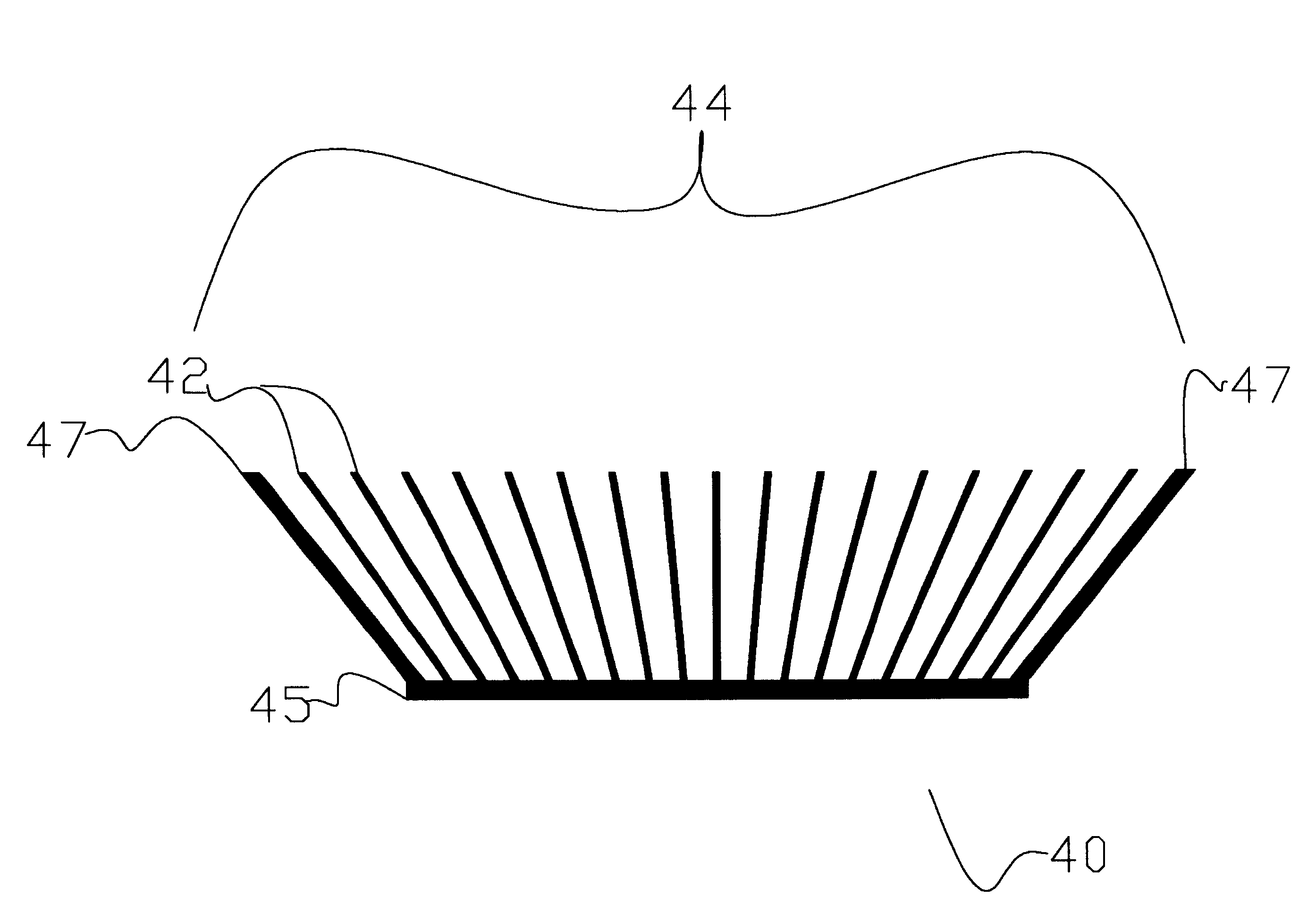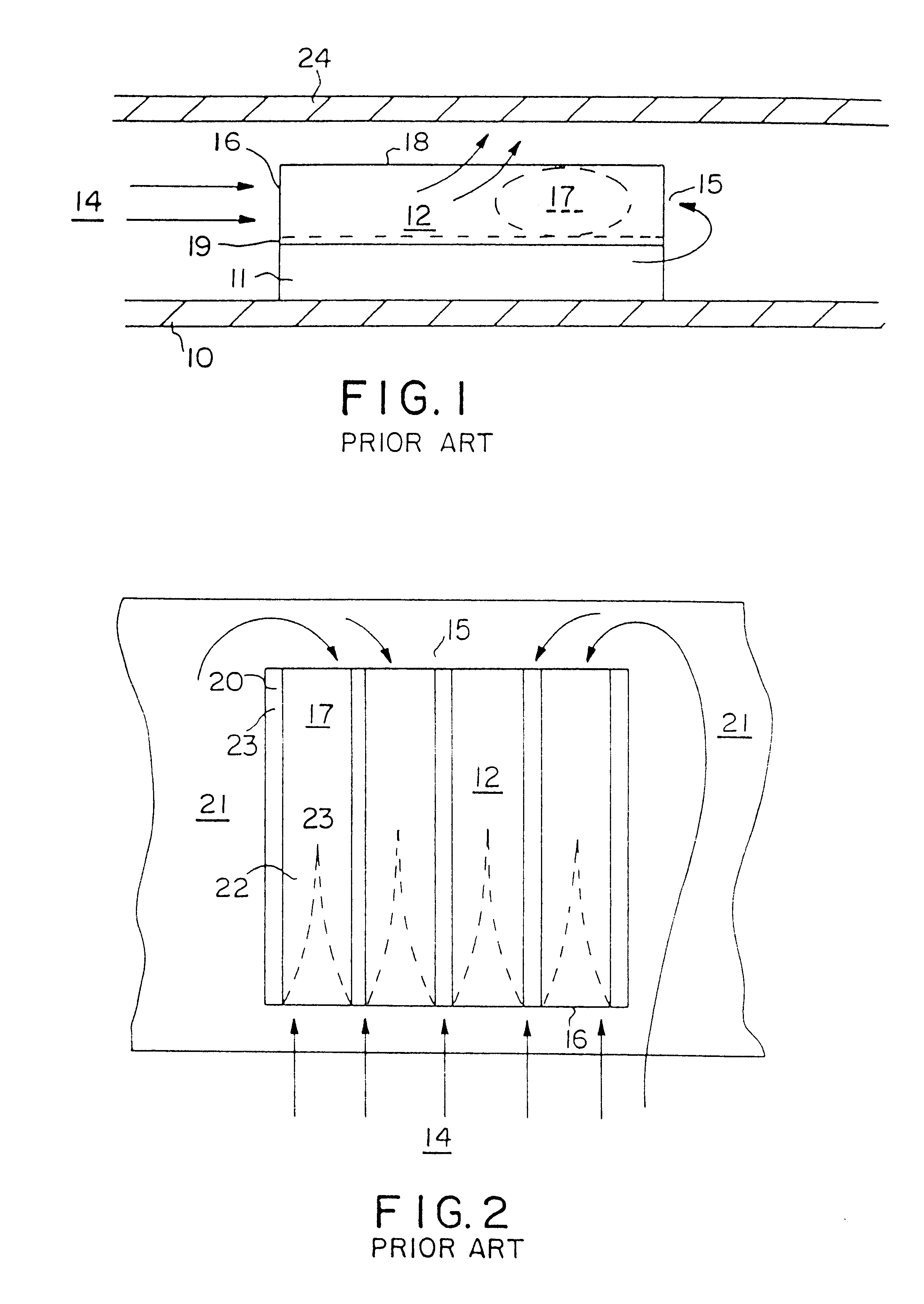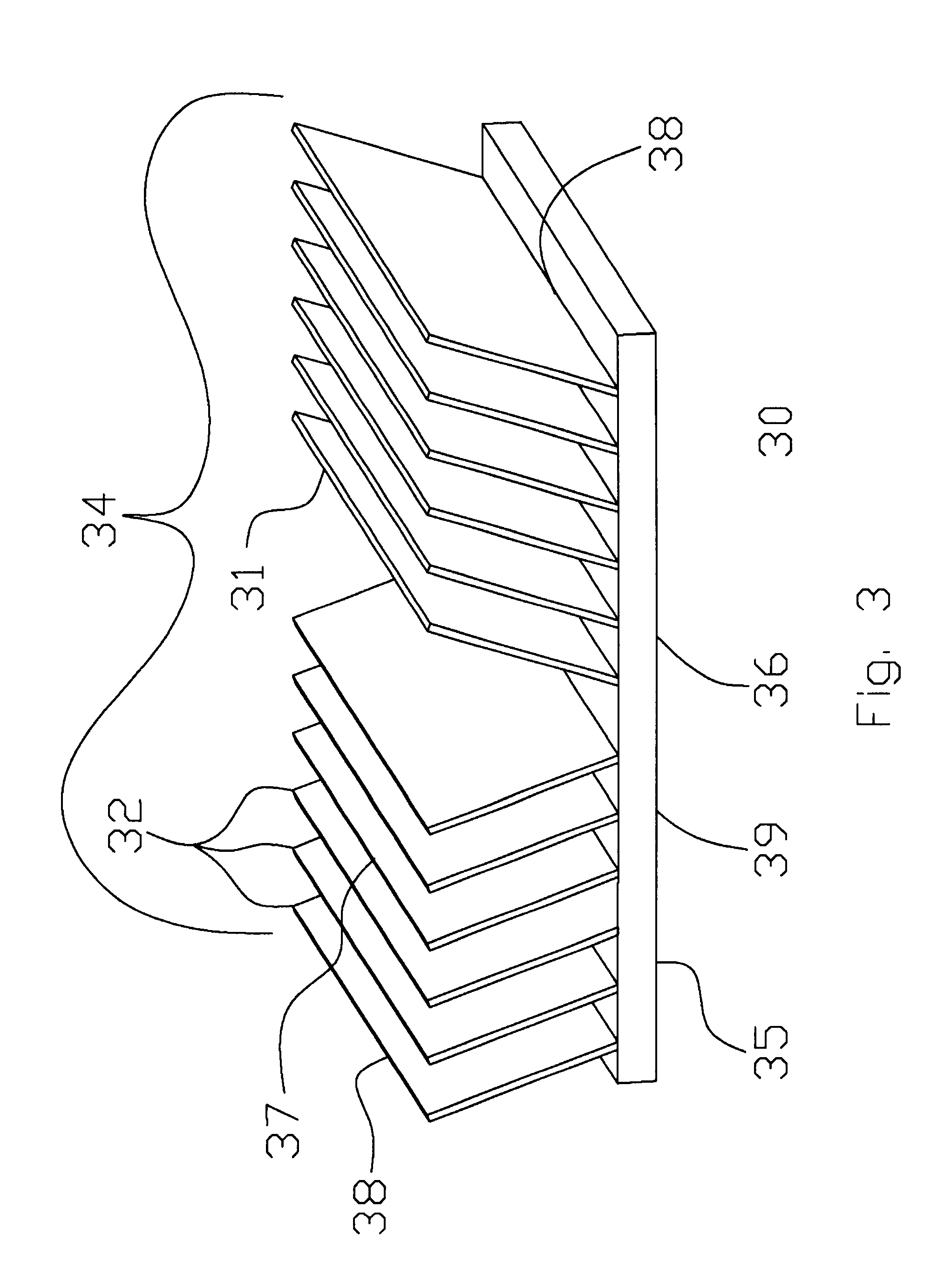High performance fan tail heat exchanger
a heat exchanger and fan tail technology, applied in the direction of lighting and heating apparatus, laminated elements, semiconductor/solid-state device details, etc., can solve the problems of insufficient design of heat exchangers for dissipating heat generated by high-power electronic components, inability to adequately dissipate heat generated by these heat-generating components, and inability to meet the needs of high-power electronic components, etc., to achieve the effect of reducing pressure drop across the heat exchanger, reducing the volume volum
- Summary
- Abstract
- Description
- Claims
- Application Information
AI Technical Summary
Benefits of technology
Problems solved by technology
Method used
Image
Examples
Embodiment Construction
In this disclosure, the term "fin" (also called a "plate" or "flat fin") refers to a substantially planar heat exchanging member that extends at an angle from a base. Such a base may support a number of plate fins, in which case, "channels" are defined as the spacing between adjacent fins. The area within and immediately about the cluster of plate fins is referred to as the "fin field." It should be understood that the term "fluid" as used herein refers to both liquids and gases. The flow of fluid across the fin field can be created using known means such as fans and natural convection.
Referring now to the drawings, FIGS. 1 and 2 illustrate a prior art configuration of a heat generating component 11 mounted to a printed circuit board (PCB) 10 and adjacent to another PCB 24. A prior art heat exchanger having individual plate fins 20 affixed to a base 19 is mounted to the component 11. The plate fins 20 define a fin field 12, and channels 23 through which cooling fluid 13 flows. The f...
PUM
 Login to View More
Login to View More Abstract
Description
Claims
Application Information
 Login to View More
Login to View More - R&D
- Intellectual Property
- Life Sciences
- Materials
- Tech Scout
- Unparalleled Data Quality
- Higher Quality Content
- 60% Fewer Hallucinations
Browse by: Latest US Patents, China's latest patents, Technical Efficacy Thesaurus, Application Domain, Technology Topic, Popular Technical Reports.
© 2025 PatSnap. All rights reserved.Legal|Privacy policy|Modern Slavery Act Transparency Statement|Sitemap|About US| Contact US: help@patsnap.com



